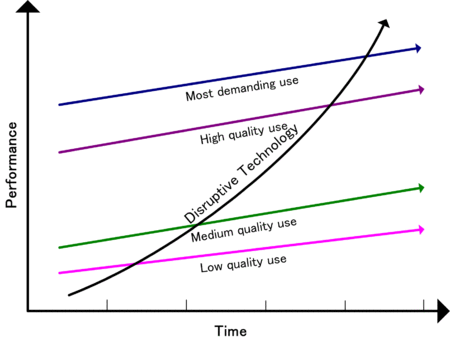Until last week’s announcement of the new Surface tablet, Microsoft had taken the same approach to mobile devices that they had with PCs: build the software themselves and let partners build the hardware. Google took a similar strategy with Android but then reversed course when they acquired Motorola. Apple’s integrated strategy was once widely ridiculed as a repeat of their losing 1990′s desktop computer strategy, but is now being copied throughout the industry.
There is a trade off between integrated and non-integrated approaches to building devices. The non-integrated approach lowers costs, but adds friction between components that compromises performance. Consider this anecdote from Microsoft’s previous attempts to build tablets with hardware partners:
The H.P. tablet was thick, the Intel processor it used made the device hot, and the software and screen hardware did not work well together, causing delays whenever a user tried to perform a touch action on its screen. “It would be like driving a car, and the car not turning when you turn the wheel,” the former H.P. executive said.
- ”With Tablet, Microsoft Takes Aim at Hardware Missteps,” New York Times
What is the difference between mobile devices today where the integrated approach is winning and desktops PCs in, say, 1995, when the non-integrated approach dominated? The best way to understand the difference is through the lens of Clay Christensen’s disruptive technology theory*. When a new category of device first launches, it is usually not “good enough” for most customers. Chistensen illustrates this with a famous graph:

According to Christensen, technology gets better at a faster rate than customers’ demands on technology do (in the graph, the black line goes up faster than the other lines). Eventually, new device categories become “good enough” (the black line crosses the purple/blue lines), and customers become unwilling to pay significantly higher prices for improved versions of the device. At this point it doesn’t make sense for manufacturers to invest in greater performance if customers won’t reward that investment. Instead, manufacturers should spend the “performance surplus” on making devices less expensive. The best way to do this is to let different companies produce the core software and hardware components, i.e. to switch from an integrated to non-integrated approach.
If you believe Christensen’s theory (and most senior people at large technology companies do), the interesting question now is: when will smartphones and tablets be “good enough” (respectively) for non-integrated to beat integrated approaches? My guess is it will be at least 5-10 years before customers are no longer willing to pay significantly more for faster bandwidth, more features, longer battery life, increased storage, faster processors, etc. But no one really knows.
It isn’t hard to see how Google, Microsoft and pretty much everyone but Apple missed the key difference between PCs and the new generation of mobile devices. Christensen himself missed it:
Christensen’s most embarassing prediction was that the iPhone would not succeed. Being a low-end guy, Christensen saw it as a fancy cellphone; it was only later that he saw it also being disruptive to laptops.
- When Giants Fail: What Business has learned from Clayton Christensen, The New Yorker. [paywall]
Seen as high-end smartphones, iPhones were “sustaining” innovations (above the blue line) that would only appeal to the highest end of the market. Seen as low-end laptops, iPhones were disruptive innovations that would eventually subsume the PC business. With support from the iPad, they seem to be doing exactly that.
* If you aren’t familiar with Clay Christensen, this talk is a great way to learn about his theories.